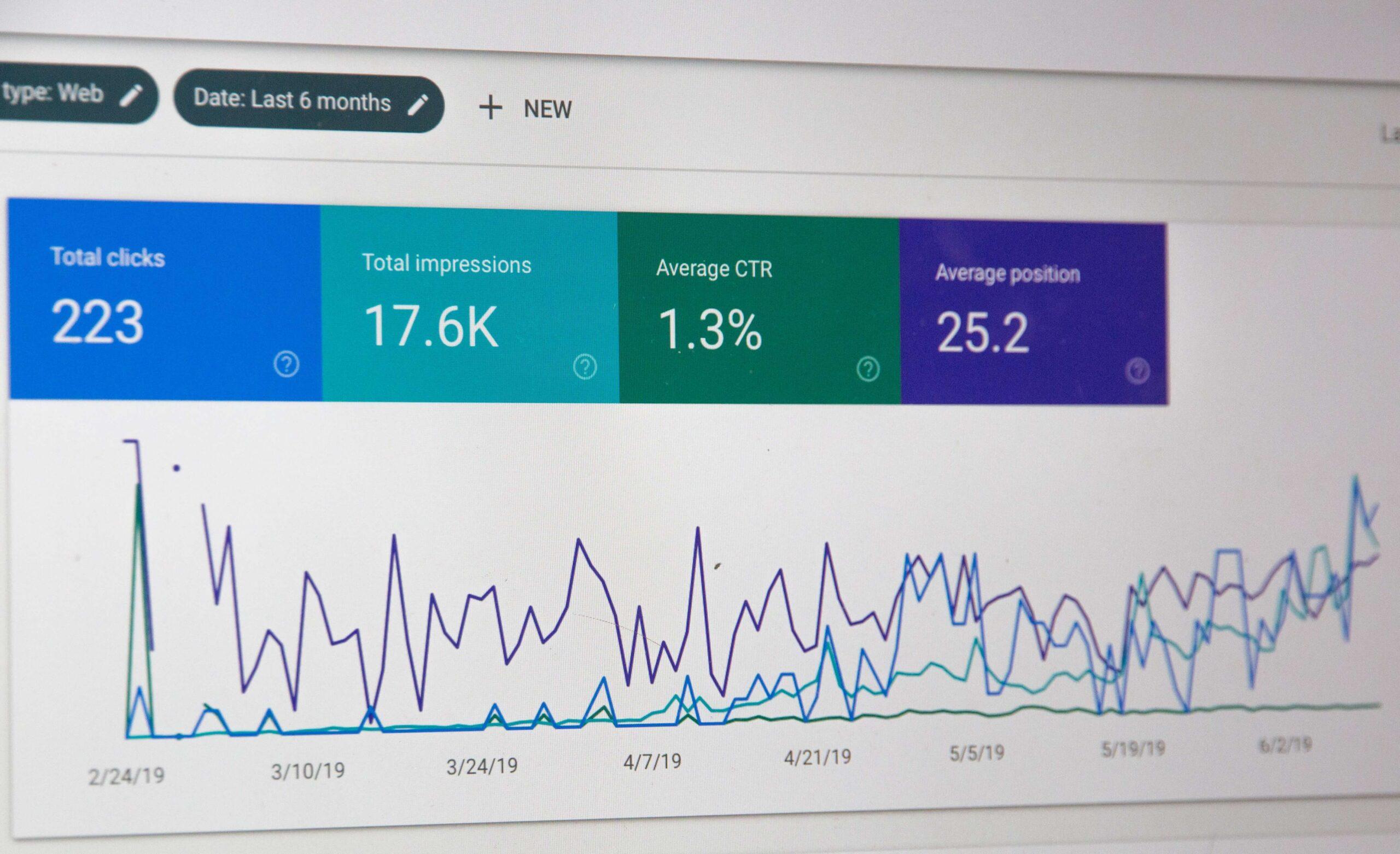What is Conversion Rate Optimization?

Most businesses try to drive more traffic to their website in the hope that more website visitors will increase their sale conversion rates.
Unfortunately, you cannot improve your conversion rates by just increasing website traffic. You must be able to engage and retain your existing visitors to boost conversions.
That is where conversion rate optimization comes in. It consists of several strategies that encourage your visitors to take action, helping you increase conversions.
Today, we will explore conversion rate optimization and the best techniques to make the most of your website visitors with the help of a conversion rate optimization agency.
What is Conversion Rate Optimization (CRO)?

Conversion rate optimization (CRO) is a part of digital marketing. It allows you to increase site visitors who take a desired action on your website or landing page.
The desired action can be buying a product, downloading an eBook, or joining a subscription.
However, you must understand a few basic things before fully grasping the conversion optimization rate concept. It is necessary to know about conversion and what is conversion rate. And if you are naive in this field, you can take help from a website optimization service whenever you want.
What is a Conversion?
This is a great place to start defining terms. Before speaking on a topic, there should be a complete understanding of critical words and their perceived definitions. Understanding how they’ll be used in a given context is important. Let’s get started!
A conversion is not a new concept. In fact, it has been around since the beginning of ancient trading. However, a conversion for one person, may not be a conversion for the next person. Here’s a simple example.
Let’s say John sells lemonades at a street-side stall. On day one, 100 people visited his booth, and he sold 25 glasses of lemonade.
A single sale is a conversion to John, who sells lemonades. However, this conversion may not be defined the same for a subscription to blogger with a mailing list.
What is Conversion Rate?
Let’s keep the same example to define and understand the conversion rate. On day one, 25 out of 100 people who visited John’s stall bought a glass of lemonade. The next day, John was able to sell 50 glasses of lemonade to the same number of people, which was 100.
Therefore, John has doubled his conversions compared to day one, which was 25%. He was able to achieve a conversion rate of 50% on day two. Check out the basic formula below!
You can calculate conversion rate with the formula below: Total conversions / total visitors x 100
How to Calculate Your Site’s Conversion Rate
As we mentioned earlier, a conversion has a different meaning for every business. For an eCommerce site, a sale can be a conversion.
On the other hand, a blog can consider a download for an eBook as a conversion. Moreover, you may have multiple desired actions you want your site visitors to take.
Therefore, the first step is to establish your desired actions. Next, you set up a way to collect quantitative data from all your landing pages with those actions. You can discuss it with a conversion rate optimization expert also to get a better idea.
Finally, you use the formula above to find your conversion rate. Below is an example to help you better understand the process.
A Look at Conversion Rate Calculation Process
Let’s say you define your conversion as a subscription opt-in for a music service. You have implemented a subscription form on every web page.
Now, you get 20,000 site visitors in a year. Out of them, 500 people decide to opt for your music subscription.
Therefore, your conversion rate is 2.5% using the conversion rate formula. You divide the total subscription opt-ins (500) by the total website visitors (20,000) to get your conversion rate.
Consequently, another desired action on your website could be downloading an eBook. In this case, you divide the total eBook downloads by the total web page visitors.
You can even find out the overall conversion rate for your website. Add up all the conversions you have set up on your website. You can take help from conversion rate optimization services as well.
Next, divide it by the total site visitors to get your conversion rate.
Conversion Rate Optimization (CRO) Best Practices
Appropriate conversion rate optimization strategies enable you to captivate your existing traffic and convert it into potential customers. Your CRO strategies may involve optimizing website copy, improving your SEO efforts, or enhancing your website’s mobile-friendliness.
However, the exact conversion rate optimization process will vary based on your business and industry. However, all the things will be pretty easy if you are a cro expert.
Along with a comprehensive process, you must implement conversion optimization best practices for more conversions. Here are a few you can try out:
Navigation and Site Structure
A website’s navigation and structure are crucial elements for conversion rate optimization. Accordingly, a site with a poor structure and unfriendly navigation may increase bounce rates.
As a result, you must focus on website navigation and structure to increase conversions. Here are a few ways to boost your optimization efforts:
Intuitive Navigation
Implement logical and user-friendly navigation to allow site visitors to quickly find what they are looking for. Maintain consistency in your navigation across all web pages for excellent user experiences.
Additionally, use visual cues and descriptive labels to help users navigate your site.
Streamline User Flow
Your conversion funnel must be smooth and encourage visitors to take action. Create a clear and uninterrupted flow for your users to perform the desired action from a landing page.
Moreover, remote clutter and make your website distraction-free. Precise call-to-action buttons or texts at strategic locations can help guide website visitors.
Responsive Design
Mobile traffic now accounts for more than 50% of the total share. As a result, your landing pages must be responsive and optimized for mobile users.
Moreover, it should load quickly and work perfectly within mobile hardware limitations. Your web pages should also look and work consistently across all screens.
Additionally, try to implement the following:
Use visual hierarchy to organize your content and information
Install a search feature on your website
Experiment with different layouts, landing page cost, menus, and navigation elements
Customer Insights and Scalability
Customer insights can help you understand your target audience and increase conversions. You can use analytics to understand customer needs, pain points, and preferences.
These insights help you optimize your website’s conversion by focusing on user-centricity. Here is a look at how you can leverage customer insights for conversion rate optimization:
Perform user research: Gather insights from your target audience via surveys, feedback, and interviews to form a deep understanding.
Analyze user behavior: Analyze click-through rates, bounce rates, time spent on pages, and conversion funnels to identify areas of optimization.
Map customer journey: Map different touchpoints of interactions to identify roadblocks and disruptions.
Now, use the insights to boost your website’s conversion rate.
Scalability
Your website must be able to handle the increased demand when your CRO starts bringing results. Therefore, you should focus on scalability to drive sustained growth and long-term success.
Here are some ways to try out:
Prioritize key pages or funnels that drive the majority of your conversions. Improving these areas can bring significant results.
Set up a standard process for workflows like A/B tests, data collection, and analytics. You can use the same approach to scale multiple websites or campaigns.
Use automation for tasks like heat mapping, data analysis, and session recordings. It helps you streamline and expedite your CRO process.
Learn and optimize your conversions regularly. CRO is an interactive process. And you can search for a cro agency to help you out.

Trust and User Experience in Website Visitors
Your conversion rate optimization steps should include improving user experience and trust. Your website must be able to offer excellent user experiences to engage and retain users. Not to mention all these things will be pretty easy with a conversion rate optimization agency.
Only then can you achieve your expected conversion rate!
Below are a few ways to boost the user experience of your website:
Use a simple website design. Optimize your UI to deliver a seamless and engaging web experience.
Implement a visually-appealing layout with minimal distractions. Let your visitors discover your CTAs effortlessly.
Optimise the loading speed of your website to make it quicker. Use a CDN and methods like caching to serve content faster.
Write compelling copy and create compelling CTAs. Good copy can turn intentions into purchasing actions.
Use legible and the right size fonts to improve readability. Incorporate ample white space to make your text easy to read.
Make checkouts and form submissions easier. Implement cues like progress indicators to keep visitors engaged.
How to Generate Trust
Trust is necessary for website visitors to interact and perform your desired action. You can take several steps to build trust and confidence in your users:
Display trust signals like customer ratings, reviews, and certifications.
Publish a thorough privacy and cookie policy.
Display trust seals like SSL and secure payments on checkout pages.
Provide and show your customer support options.
Use transparent pricing and policies.
Use authentic visuals like images and videos.
Quantitative and Qualitative Data
Data collection is necessary to understand your customers and identify areas of improvement. You must collect quantitative and qualitative data to form a holistic picture to drive your CRO.
Quantitative Data
Quantitative data allows you to understand what visitors do on your website. You can find out various things, such as:
Where do most visitors click?
How much time do they spend on different pages?
Which pages receive the most bounces?
Quantitative data enables you to make numerical measurements and statistical analyses. It lets you identify user behaviors, patterns, and trends.
Some of the key data are:
Heatmaps
Conversion tracking
Page flow
Scroll maps
Exit rates
The insights can help you discover potential barriers to boosting your conversions.
Qualitative Data
Qualitative data gives you deeper insights into user behavior and preferences. It helps you understand the reason behind visitor actions.
A few sources to gather qualitative data include:
Surveys
Feedback forms
Session recordings
User testing
Qualitative data can help you answer critical questions about your conversion rate. You may find out:
The cause of abandoned carts
Confusing parts about your checkout process
Why certain landing pages aren’t performing
Businesses can leverage quantitative and qualitative data to generate actionable insights. You can prioritize your CRO efforts and create a user-centric web experience.
How to Find the Ideal Conversion Rate for Your Site?

The average conversion rate across industries is around 2% to 4%. For example, the food and drinks industry has an average conversion rate of 1%.
Additionally, the eCommerce industry has a conversion rate of 2% to 3%.
You can rely on a few ways to find out your ideal conversion rate. They are as follows:
Desired Actions

Establish your conversions by determining your desired actions. Tie them with your business objectives and measure the right KPIs.
Gauge your performance against industry benchmarks. Your goal should be to convert more than your competitors.
However, be sure to set realistic goals you can achieve.
CTA
Create and test different versions of CTAs. Moreover, analyze metrics like click-through, engagement, and conversion rates with each CTA.
Use the variations that bring the best results.
People Method
Understand your site visitors and how they interact with it. Gain insights into their pain points and find out what is limiting their conversions.
This qualitative research can aid you in determining your ideal conversion rate.
Conversion Rate Optimization Tools

Conversion rate optimization tools allow you to uncover user preferences and generate insights. However, you must be able to use your brain and eyes above everything else.
Your capabilities will help you make sense of insights and determine the right steps to take. Additionally, you may rely on the following tools:
Quantitative Data Tools
You may rely on several tools to generate numerical insights:
Web analytics tools like Google Analytics
Heat mapping tools like Bing Webmasters Tools
Sales funnel tools
An analytics tool to track form submissions, opt-ins, and so on
Qualitative Data Tools
Websites can rely on the following tools to collect qualitative data:
Feedback tools like surveys and polls
Website session recording tools
Usability testing tools
Tools like Google Analytics let you set up custom conversions for comprehensive tracking. You can gain meaningful insights and track your metrics without too many tools. Besides that, there are many conversion rate optimization companies as well to boost the conversion rate for your online business.
Hiring a Conversion Rate Optimization Agency
We just went through a lot of important factors to keep in mind and implement on your road to conversion rate optimization. We defined what it is, how to calculate it, best practices, the importance of setting your conversion rate goals, and we finished by listing some tools that can help! A worthy CRO expert company and conversion rate optimization agency can help you with all of this.
Do you want to learn more about CRO? Hubspot has a great article on what you should know if you want to get started with CRO.
Businesses can contact us to boost CRO with the help of our website optimization firm. We are the secret behind the success of many startups, SMEs, and enterprises. Call us or schedule a consultation to know how we can help.
